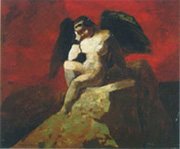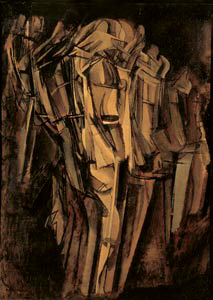Once More to
this Staircase: by Bradley Bailey For Dario Gamboni |
|||||||||||||||||||||||||||||||||||||||||||
|
The position of the central head, with the head resting on the hand or fist, is a posture inextricably linked with chess players, as it is seen in myriad representations of the subject (Figs. 16 and 17). Duchamp used this iconic posture for the figure of Jacques Villon in nearly all the studies for Portrait of Chess Players and in the final oil painting (Fig. 18). Duchamp himself appears in this manner on several occasions, as seen in a photograph used for a window display devoted to Duchamp at the bookshop La Hune in Paris in 1946 (Fig. 19), and in the sculpture Marcel Duchamp Cast Alive (1967) (Fig. 20), executed by Alfred Wolkenberg, which bears an eerie resemblance to the head in Encore. There are certainly practical explanations for the intimate communion shared by the game and this posture; chess games can go on for extended periods of time, during which the neck grows tired and requires additional support. However, in several instances, the hand at the chin appears to support the figure mentally rather than physically.
No doubt the most famous, reproduced, and parodied image of thought of the twentieth century is Rodin's Thinker (Fig. 21), who, rapt in his all-consuming contemplation, is the icon for the workings of the human mind. Centuries earlier, Michelangelo's depiction of Lorenzo de' Medici at the latter's tomb in Florence (Fig. 22), which has often been cited as a model for Rodin's allegory, was dubbed "Il Penseroso" due to the contrast of his downcast eyes and inward expression with the more active, outward thrust of the sculpture of his brother Giuliano. The fact that both chess players and "thinkers" share the same conventions for representation is far from coincidental, as chess is considered among the most difficult and intellectual of pursuits. Duchamp often stated that art should be more like chess, which is "completely in one's gray matter,"(15) or, in Hubert Damisch's words, "cosa mentale."(16) His desire for art to become "an intellectual expression" was ultimately realized with the Readymades and the Large Glass,(17) but signs of this desire are visible as early as his studies for the Portrait of Chess Players. There
is, however, another association to be made with the posture of the
central head, one which may be linked to another important painting
by Duchamp produced at or near the same time as Encore. For centuries,
the propped-up head had an association with another type of thinker,
the melancholic. Melancholy, an affliction thought by medieval scientists
to have been brought on by an imbalance of bodily humors and the positions
of the planets, was exalted during the Renaissance by humanists as a
sign of genius.(18)
These humanists championed Saturn, who "was discovered in a new and personal sense by the intellectual elite, who were indeed beginning to consider their melancholy a jealously guarded privilege, as they became aware both of the sublimity of Saturn's intellectual gifts and the dangers of his ambivalence."(19) Among the more famous portrayals of the saturnine artist is Raphael's depiction of Michelangelo (Fig. 23), a self-proclaimed melancholic, in his School of Athens (1510-11).(20) Certainly the most famous image of melancholy (and one of the most analyzed images in the history of art) is Dürer's engraving Melencolia I (Fig. 24), interpreted by Erwin Panofsky as a "spiritual self-portrait,"(21) through which Dürer represented "the melancholic artist, both cursed and blessed with a wider range of knowledge and a glimpse into the realm of metaphysical insight, [who] is painfully aware of the discrepancy between the necessary physical concerns of art and the higher metaphysical understanding that is desired."(22) Melencolia I has already been linked with Duchamp's work by Maurizio Calvesi, who indicated that both artists had a shared interest in alchemical imagery.(23) A close comparison of the melancholic angel in Dürer's engraving and the central head in Encore reveals that the two figures share two conventions that Raymond Klibansky, Fritz Saxl, and Panofsky called "the clenched fist and the black face,"(24) meaning that both heads are propped up by a fist and the faces are heavily shaded. These conventions, which were originally physiognomic symptoms of a medical affliction, were appropriated by humanists to signify a mental rather than a physical condition.(25) In addition to Dürer's famous engraving, Duchamp could have seen these conventions used by another artist for whom his admiration is well documented, Odilon Redon,(26) whose Penseroso (1874) (Fig. 25) and Angel in Chains (1875) (Fig. 26) owe a debt to Michelangelo and Dürer, respectively.(27)
If the central head of Encore does indeed reflect the conventions of the melancholic artist, does this possibility have any bearing on the title of the Sad Young Man on a Train (Fig. 27), painted shortly after Encore was produced? While Duchamp insisted that the young man's "sadness" was introduced merely for the purposes of alliteration ("triste" and "train"), Seigel pointed out that the painting's original title, "Pauvre Jeune Homme M.," maintained the same mood minus the alliteration.(28) Moreover, the original title was, like Encore, taken from Jules Laforgue, leading to the possibility that Encore may in some way be a study for the Sad Young Man. Steefel's descriptions of Duchamp in late 1911 as "fiercely intellectual," "private and eccentric under a cloak of pervasive 'Hamletism' and desultory ennui," and subject to "an inhibiting malaise of spirit"(29) support the notion that the "sad young man," who Duchamp clearly indicated is a self-portrait, may in fact be a self-representation as the melancholic artist. As I stated at the beginning of this essay, I find Steefel's reading of the "female" figure at the left as a "sex object" very persuasive, and her mechanomorphic sexuality is likely an anticipation of Duchamp's other paintings involving "the erratic mechanism of human desire."(30) It is tempting to try to understand Encore, one of Duchamp's many tripartite compositions, as a single idea, an integrated image in which the three elements have some common denominator. Encore seems to be the very definition of Foucault's concept of the heteroclite, of things "'laid', 'placed', 'arranged' in sites so very different from one another that it is impossible to find a place of residence for them, to define a common locus beneath them all."(32) As it is highly unlikely that the three elements were conceived and intended to be seen independently, an integrated reading appears to be in order. From the various analyses of the elements of Encore I have endeavored to support, a pattern may be inferred: the staircase, a symbol most commonly associated with spiritual concerns; the chess player or melancholic, both of whom are linked to the intellect; and the mechanical/female "sex object," or, like the later coffee and chocolate grinders, a "sex machine." Taken together, the spirit, the intellect, and the carnal are all forms of desire-the desire for salvation, the desire for the acquisition of knowledge or creative growth, and lust. Desire, specifically unfulfilled desire, became one of the critical operators in Duchamp's work, from his distanced disrobing of Dulcinea to the perpetually unconsummated desires of the bride and bachelors.(33) For indeed, by assiduously attempting to locate any logical continuity to conjoin the three figures in Encore, we find ourselves more intimately acquainted with the notion of frustrated desire.
page 1 2
Notes
Figs.
18, 20, 27 |
|||||||||||||||||||||||||||||||||||||||||||
.jpg)
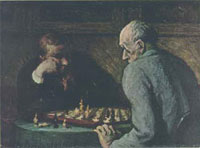
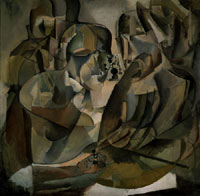
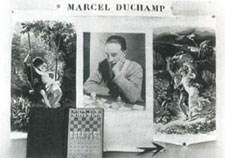
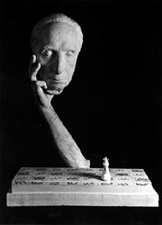
.jpg)
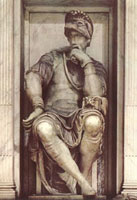
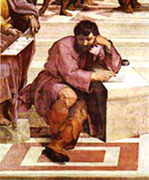
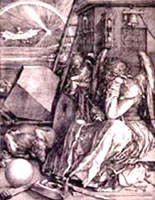
.jpg)
